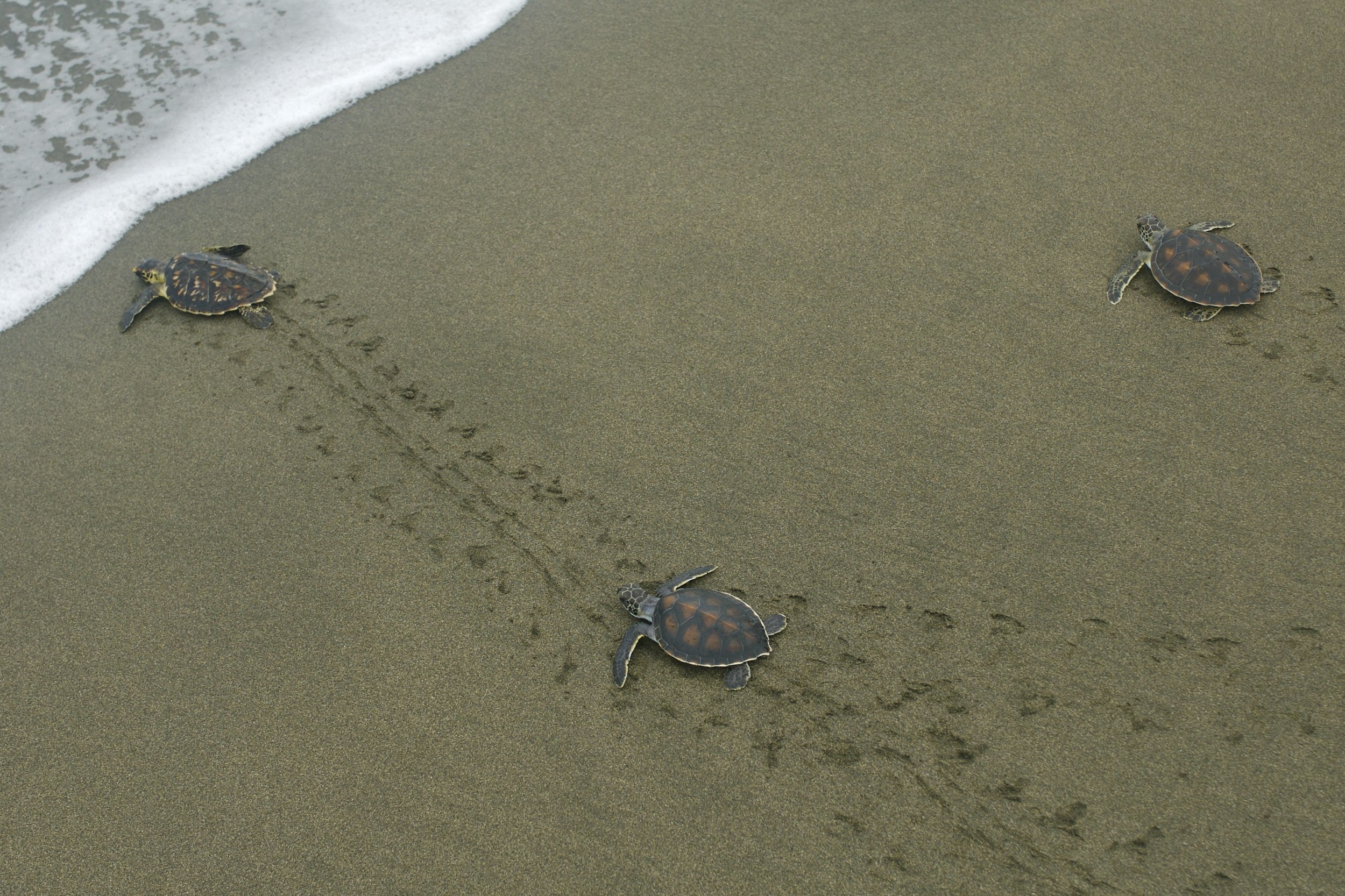
Sea Turtle Nesting Beaches
The mystery of witnessing an adult sea turtle can be a life changing experience. When you visit a nesting beach, go with a trained, professional guide who can ensure your safety and the turtle’s.
These females are very sensitive to disturbance, which may prevent them from laying their eggs. Remember that they are endangered, wild animals; seeing one is rarely guaranteed. Make sure to avoid buying turtleshell jewelry as well.
Keep it dark: Lights affect nesting females and hatchlings.
Flash photography can be disturbing and harmful to sea turtles and is therefore strictly controlled and in many locations prohibited. Check with your guide to determine if it is permitted and when.
Use a flashlight with a red filter and avoid shining light in the turtle’s eyes or let researchers and guides handle lighting.
Many conservation projects encourage or require visitors to wear dark clothing on the beach.
Fires on a nesting beach can distract nesting turtles, attract hatchlings, and kill nearby nests.
Respect the mothers: They produce the next generation of hatchlings and need to lay as many eggs as possible.
While walking, always stay with the guide to avoid surprising a turtle (though watch out for waves!).
Walking on the moist sand will prevent surprising a female or emerging hatchlings. If you encounter an adult emerging from the sea, be still and allow her to travel up the beach.
Wait for your guide to tell you when you can approach. Normally this is after it has started laying eggs. At this moment, she is highly focused on nesting and your presence is less likely to disturb her.
Always stay behind the their front flippers and away from her head and be sure to speak softly and move slowly. Give researchers and guides room to work and save your questions for when they are done so they can give you their full attention.
In the US, only permitted researchers can touch sea turtles or their eggs. Overseas, follow local regulations about interacting with wildlife.
When she is finished nesting, make sure to leave plenty of space for her to return to the ocean. Leave pets at home so they do not disturb or injure turtles or their nests.
Report any suspicious human behavior to your guides.
Watch out for hatchlings:
While walking along the beach during turtle hatchling season, be on the lookout for baby turtles working their way to the sea to avoid stepping on them.
Hatchlings need to walk down at least part of the beach by themselves, they do not need help except for a clear path to the ocean.
To learn more about sea turtle hatcheries and how to pick a good one to visit, check out ResponsibleTravel.com's sea turtle hatchery best practices.
Sea Turtle Conservation Tours
Photo credits: Neil Ever Osborne, Rene Perez Massola





